No Results Found
The page you requested could not be found. Try refining your search, or use the navigation above to locate the post.
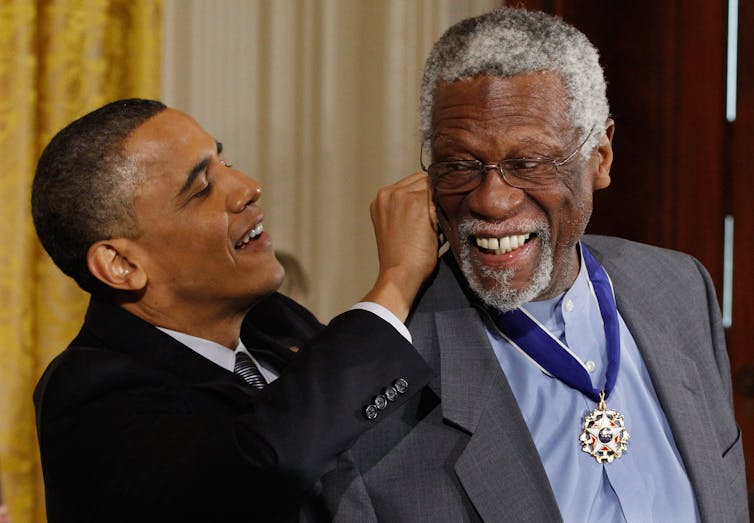
As the father of Black history, Carter G. Woodson had a simple goal – to legitimize the study of African American history and culture.
To that end, in 1912, shortly after becoming the second African American after W.E.B. Du Bois to earn a Ph.D. at Harvard, Woodson founded the Association for the Study of Negro Life and History in 1915.
More than 100 years later, Woodson’s goal and his work detailing the struggle of Black Americans to obtain full citizenship after centuries of systemic racism is still relevant today.
As dozens of GOP-controlled state legislatures across the U.S. have either considered or enacted laws restricting how race is taught in public schools, The Conversation U.S. has published numerous stories over the years exploring the rich terrain of Black history – and the never-ending quest to form what the Founding Fathers called a more perfect union.
Armed with a deep faith, Harriet Tubman is most famous for her successes along the Underground Railroad, the interracial network of abolitionists who enabled Black people to escape from slavery along secret routes in the South to freedom in the North and Canada.
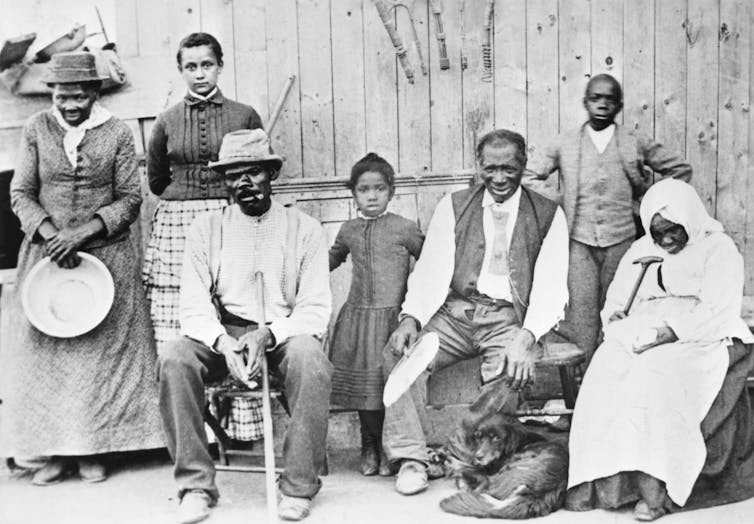
But Tubman’s activities as a Civil War spy are less well known.
As historian and Tubman biographer Kate Clifford Larson wrote, Tubman’s devotion to America’s promise of freedom endured, despite suffering decades of enslavement and second-class citizenship.
“I had reasoned this out in my mind,” Tubman once said. “There was one of two things I had a right to, liberty or death. If I could not have one, I would have the other; for no man should take me alive.”
As a scholar of race and colonialism, Kris Manjapra wrote that Emancipation Days – Juneteenth in Texas – are not what many people think.
“Emancipations did not remove all the shackles that prevented Black people from obtaining full citizenship rights,” Manjapra noted. “Nor did emancipations prevent states from enacting their own laws that prohibited Black people from voting or living in white neighborhoods.”
Between the 1780s and 1930s, over 80 emancipations from slavery occurred, from Pennsylvania in 1780 to Sierra Leone in 1936.
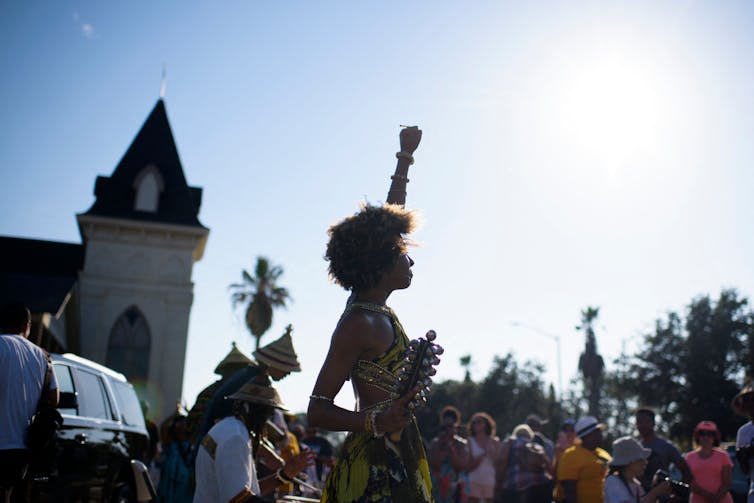
In fact, there were 20 separate emancipations in the United States alone from 1780 to 1865.
As director of the Lynching in Texas project, historian Jeffrey L. Littlejohn provided the very kind of analysis that Texas Gov. Greg Abbott and Republican legislators in Texas want to ban from public schools.

Among the many documents and relics Littlejohn has received, one package stood out. Inside was a family album of photographs filled with the usual images of memories – a vacation, a wedding anniversary dinner – but also, one of the lynching of a Black man.
During the Jim Crow era, lynchings occurred regularly in Texas – with 16 in 1922 alone.
But in 2021, the GOP-controlled state Legislature in Texas enacted a law prohibiting K-12 educators from teaching that “slavery and racism are anything other than deviations from … the authentic founding principles of the United States, which include liberty and equality.”
In other words, as Littlejohn wrote, “this interpretation holds that slavery, racism and racism’s deadly manifestation, lynching, did not serve as systemic forces that shaped Texas history but were instead aberrations.”
The photo album serves as a direct challenge to that interpretation.
In his book “Half American: The Epic Story of African Americans Fighting World War II at Home and Abroad,” historian Matthew Delmont explored the idea of Black patriotism and how many Black soldiers saw their service as a way to demonstrate the capabilities of their race.
Prompted by the Pittsburgh Courier, an influential Black newspaper during the 1940s, Delmont wrote that Black Americans rallied behind the Double V campaign during the war – victory over fascism abroad and victory over racism at home.
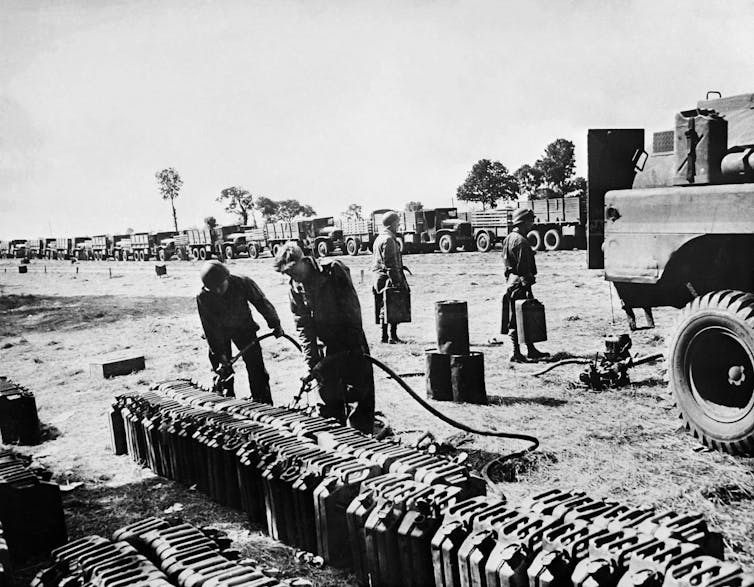
During the war, the Red Ball Express, the Allied forces’ transportation unit that delivered supplies to the front lines, was one example of such exceptional performance.
From August through November 1944, the mostly Black force moved more than 400,000 tons of ammunition, gasoline, medical supplies and rations to battlefronts in France, Belgium and Germany.
In his biography of Bill Russell, “King of the Court,” Aram Goudsouzian wrote that the NBA champion sought to find worth in basketball amid the racial tumult of the civil rights movement.
He emerged from that crucible by crafting a persona that one teammate called “a kingly arrogance.”
Russell, who died July, 31, 2022, was the NBA’s first Black superstar, its first Black champion and its first Black coach.
As a civil rights activist, Russell questioned the nonviolence philosophy of Martin Luther King Jr. and defended the militant ideas of Malcolm X and the Nation of Islam. He refused to accept segregated accommodations in the Deep South and recalled instances of police brutality during his childhood in Oakland, California.
“It’s a thing you want to scream,” Russell wrote. “I MUST HAVE MY MANHOOD.”
Editor’s note: This story is a roundup of articles from The Conversation’s archives.![]()
Howard Manly, Race + Equity Editor, The Conversation
This article is republished from The Conversation under a Creative Commons license. Read the original article.
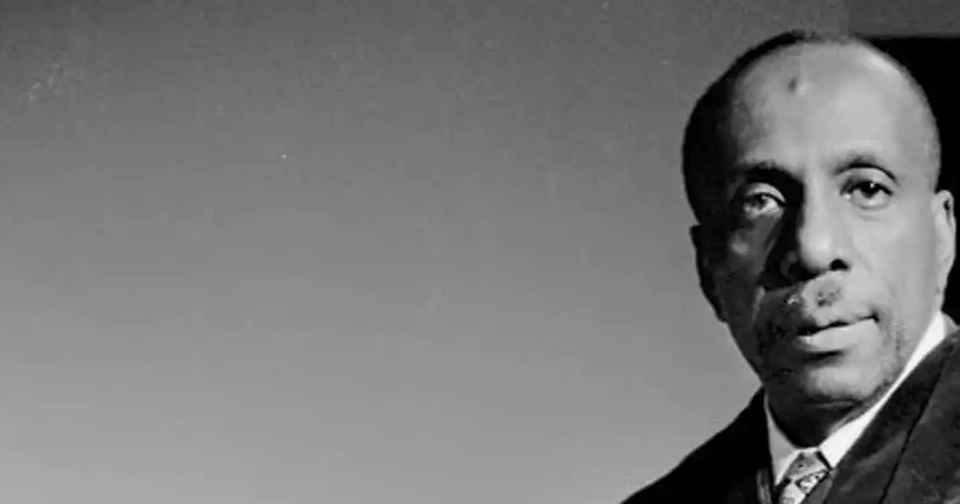
Video Courtesy of MPT National
For African-Americans who grew up with the legacy of segregation, disfranchisement, lynching, and violence, retreat from social struggle was unthinkable. Martin Luther King Jr., however, learned from some important mentors how to integrate spiritual growth and social transformation.
As a historian, who has studied how figures in American history struggled with similar questions, I believe one major influence on King’s thought was the African-American minister, theologian, and mystic Howard Thurman.
Born in 1899, Thurman was 30 years older than King, the same age, in fact, as King’s father. Through his sermons and teaching at Howard University and Boston University, he influenced intellectually and spiritually an entire generation that became the leadership of the civil rights movement.
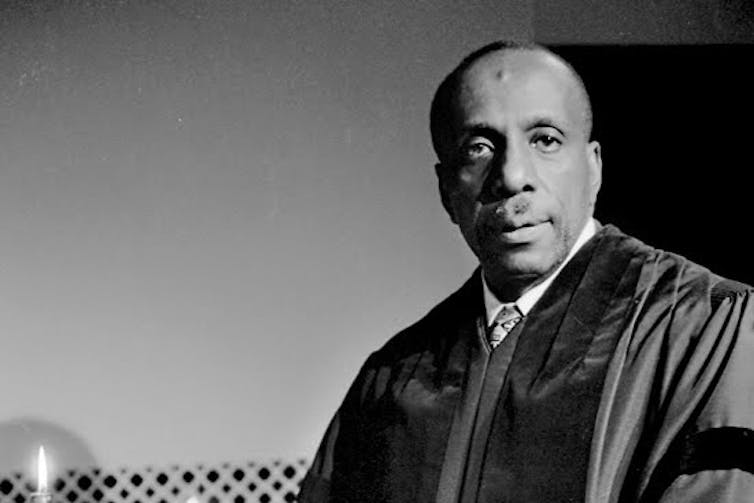
Among his most significant contributions was bringing the ideas of nonviolence to the movement. It was Thurman’s trip to India in 1935, where he met Mahatma Gandhi, that was greatly influential in incorporating the principles of nonviolence in the African-American freedom struggle.
At the close of the meeting, which was long highlighted by Thurman as a central event of his life, Gandhi reportedly told Thurman that “it may be through the Negroes that the unadulterated message of nonviolence will be delivered to the world.” King and others remembered and repeated that phrase during the early years of the civil rights movement in the 1950s.
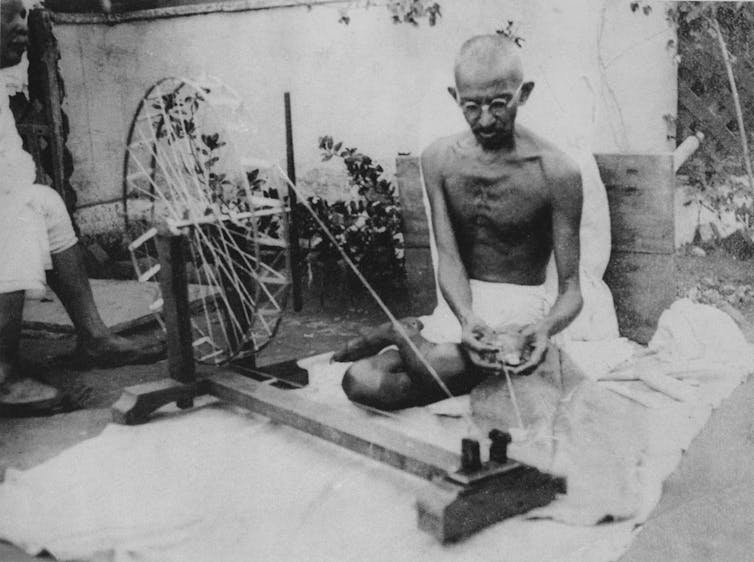
Thurman and King were both steeped in the black Baptist tradition. Both thought long about how to apply their church experiences and theological training into challenging the white supremacist ideology of segregation. However, initially their encounters were brief.
Thurman had served as dean of Marsh Chapel at Boston University from 1953 to 1965. King was a student there when Thurman first assumed his position in Boston and heard the renowned minister deliver some addresses. A few years later, King invited Thurman to speak at his first pulpit at Dexter Avenue Baptist Church in Montgomery, Alabama.
Their most serious personal encounter – the one that gave Thurman his opportunity to influence King personally, and help prepare him for struggles to come – came as a result of a tragedy.
On Sept. 20, 1958, a mentally disturbed African-American woman named Izola Ware Curry came to a book signing in upper Manhattan. There, King was signing copies of his new book, “Stride Toward Freedom: The Montgomery Story.” Curry moved to the front of the signing line, took out a sharp-edged letter opener and stabbed the 29-year-old minister, who had just vaulted to national prominence through his leadership of the Montgomery bus boycott.
King barely survived. Doctors later told King that, if he had sneezed, he easily could have died. Of course, King later received a fatal gunshot wound in April 1968. Curry lived her days in a mental institution, to the age of 97.
It was while recuperating in the hospital afterward, that King received a visit from Thurman. While there, Thurman gave the same advice he gave to countless others over decades: that King should take the unexpected, if tragic, opportunity, to meditate on his life and its purposes, and only then move forward.
Thurman urged King to extend his rest period by two weeks. It would, as he said, give King “time away from the immediate pressure of the movement” and to “rest his body and mind with healing detachment.” Thurman worried that “the movement had become more than an organization; it had become an organism with a life of its own,” which potentially could swallow up King.
King wrote to Thurman to say, “I am following your advice on the question.”
King and Thurman were never personally close. But Thurman left a profound intellectual and spiritual influence on King. King, for example, reportedly carried his own well-thumbed copy of Thurman’s best-known book, “Jesus and the Disinherited,” in his pocket during the long and epic struggle of the Montgomery bus boycott.
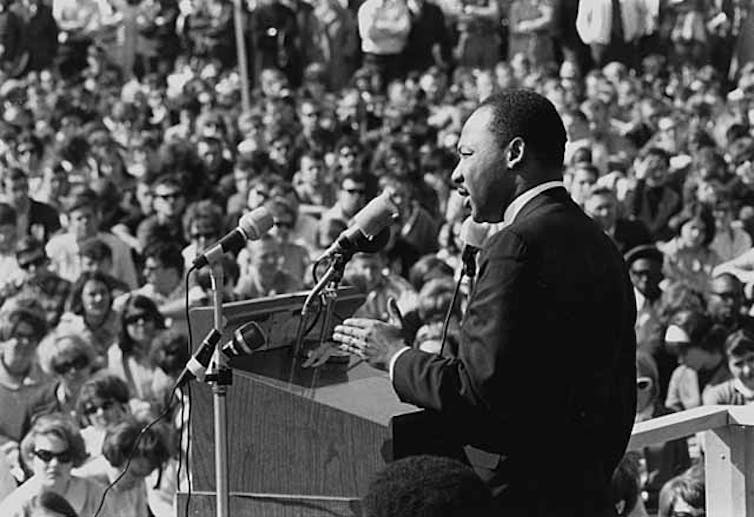
In his sermons during the 1950s and 1960s, King quoted and paraphrased Thurman extensively. Drawing from Thurman’s views, King understood Jesus as friend and ally of the dispossessed – to a group of Jewish followers in ancient Palestine, and to African-Americans under slavery and segregation. That was precisely why Jesus was so central to African-American religious history.
Thurman was not an activist, as King was, nor one to take up specific social and political causes to transform a country. He was a private man and an intellectual. He saw spiritual cultivation as a necessary accompaniment to social activism.
As Walter Fluker, editor of the Howard Thurman Papers Project, has explained, the private mystic and the public activist found common ground in understanding that spirituality is necessarily linked to social transformation. Private spiritual cultivation could prepare the way for deeper public commitments for social change. King himself, according to one biographer, came to feel that the stabbing and enforced convalescence was “part of God’s plan to prepare him for some larger work” in the struggle against southern segregation and American white supremacy.
In a larger sense, the discipline of nonviolence required a spiritual commitment and discipline that came, for many, through self-examination, meditation and prayer. This was the message Thurman transmitted to the larger civil rights movement. Thurman combined, in the words of historian Martin Marty, the “inner life, the life of passion, the life of fire, with the external life, the life of politics.”
King’s stabbing was a bizarre and tragic event, but in some sense it gave him the period of reflection and inner cultivation needed for the chaotic coming days of the civil rights struggle. The prison cell in Birmingham, Alabama, where in mid-1963 King penned his classic “Letter from Birmingham Jail,” also accidentally but critically provided much the same spiritual retreat for reflections that helped transform America.
The relationship of Thurman’s mysticism and King’s activism provides a fascinating model for how spiritual and social transformation can work together in a person’s life. And in society more generally.
This is an updated version of an article originally published on Jan. 11, 2018.![]()
Paul Harvey, Professor of American History, University of Colorado Colorado Springs
This article is republished from The Conversation under a Creative Commons license. Read the original article.
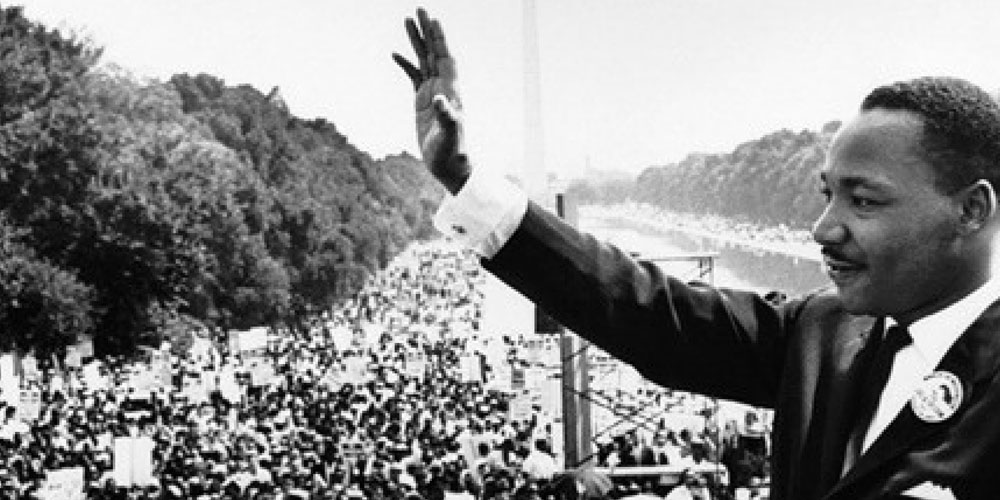
Video, courtesy of TIME
In celebration of Martin Luther King, Jr., we’ve compiled several of the stories we’ve published over the years about his life and ministry.
The page you requested could not be found. Try refining your search, or use the navigation above to locate the post.
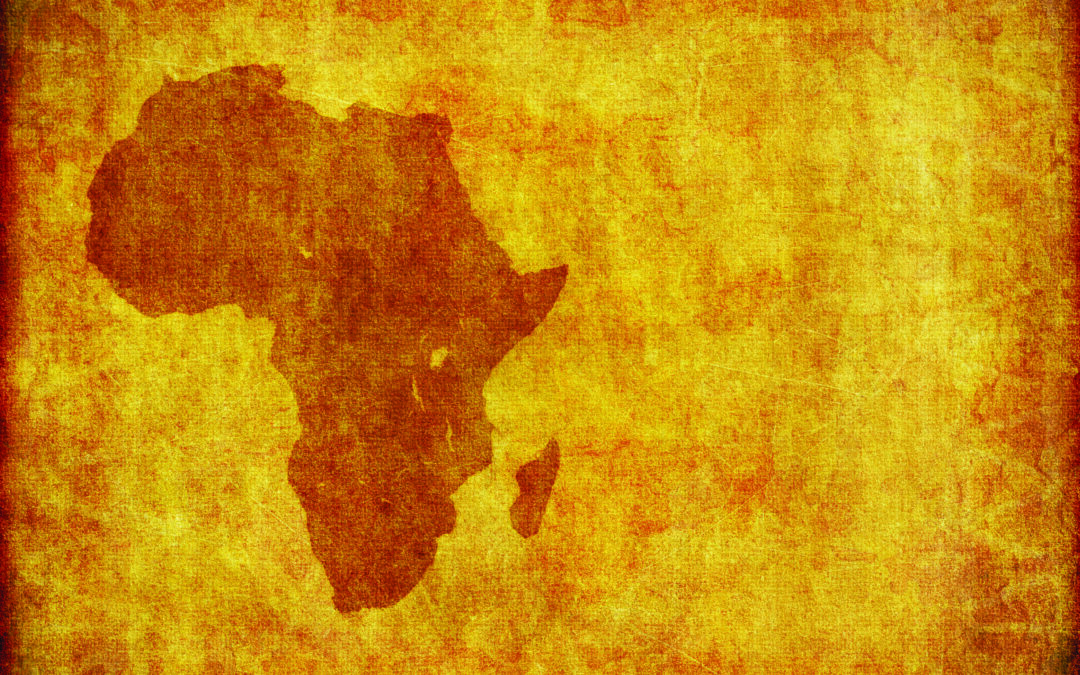
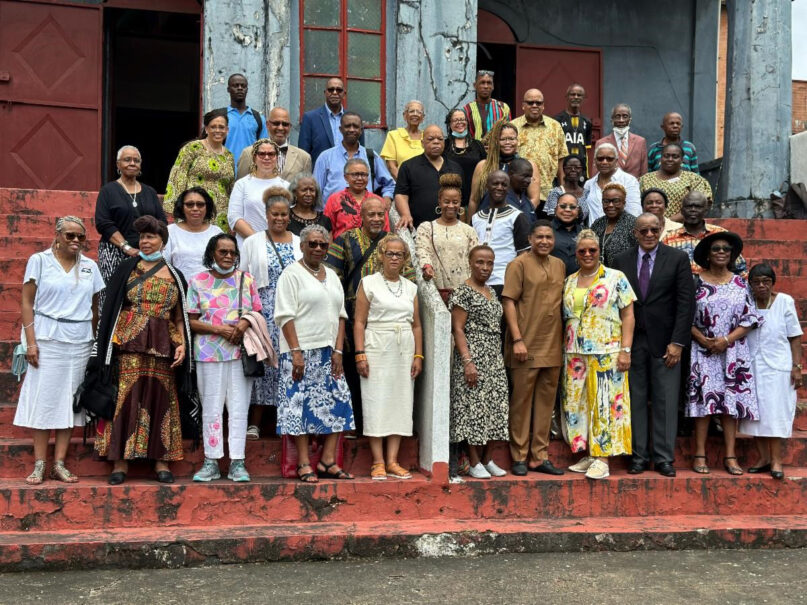
Providence, the oldest Baptist church in the West African country and the second oldest on the continent, was founded in 1822 by the Rev. Lott Carey, who had come as a missionary to the fledgling country and had brought a team of African American settlers home. Now, 200 years later, the Rev. Emmett L. Dunn, CEO of the Lott Carey Foreign Mission Convention, had brought a team of African Americans home.
I have traveled to several countries in Africa, and each one is imprinted on my heart in a special way. But hearing the stories of the African American settlers was cause to pause. I connected with the history of Liberia in a way I didn’t expect. I felt blessed beyond measure.
Landing in Liberia my spirit leaped like the baby in Elizabeth’s belly when greeting Mary, the mother of Jesus. The sights and sounds of Liberia greeted my senses, sending my head and my heart into overwhelming joy.
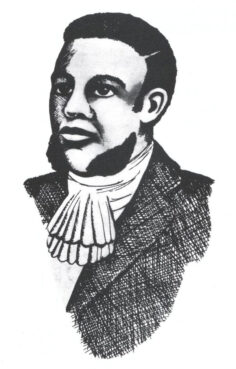
The Rev. Lott Carey. Photo courtesy of Creative Commons
In Liberia, I was at home. Home in the land of my ancestors on World Communion Sunday. Home, where a sense of “double consciousness” — a concept coined by W.E.B. DuBois to describe African Americans’ sense of dislocation from Africa and ourselves — liberated my thoughts and linked them to my theology in a free-spirited dance of deliverance.
It’s often said we must step back before we step forward. Walking in the footsteps of Lott Carey in the motherland afforded us the opportunity to do just that.
Born enslaved in 1780 in Charles City County, Virginia, Carey became a disciple of Jesus in 1807, purchased his freedom in 1813, and led the first Baptist missionaries to Africa from the United States in 1821.
After settling in Liberia, Carey and his pioneering missionary team engaged in evangelism, education and health care. He served as a missional and civic leader until his death in 1828.
Our pilgrimage relived aspects of this journey and the experiences of his team. We explored Providence Island, where Carey landed in Liberia in early 1822. Before we landed in Liberia, Dunn told us, “We expect that this journey into the past will bring home to us the love and sacrifice of those who walked this journey before us.”
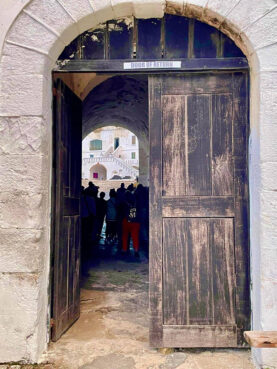
The Door of Return at the Slave Castle in Cape Coast, Ghana. It was once dubbed “The Door of No Return,” signaling the last time enslaved persons would see their homeland. Courtesy photo
Our next stop in Africa took us nearly 1,000 miles east along the coast of the Assin Manso Slave River and the Cape Coast castle in Ghana, unofficially dubbed “the Door of No Return” by our Ghanian sisters and brothers, through which so many of our ancestors were shackled and shipped into the slave trade in the New World. It has become a portal for African Americans, pulling us back to Ghana.
Before walking to the Slave River, where my ancestors received their first bath after being captured and their last bath before being carted off to the Americas, we held a ceremony of protection over Lott Carey’s life. In my sanctified imagination, my African ancestors’ prayers came to fruition in the proclamation made that day. What was meant for evil, God had used for good some 400 years later.
How ironic is it? In a whitewashed slave castle used to destroy the African spirit, a group of spirited African Americans reconnected with a long-lost history, historically whitewashed in American culture and the church universal.
My Bible says, “Be steadfast and persevering, my beloved sisters and brothers, fully engaged in the work of Jesus. You know that your work is not in vain when it is done in Jesus’ name.”
It was in that spirit that the last leg of our journey in homage to Lott Carey ended with saluting our ancestors on the same shores where they passed, returning where no return was promised. In the Twi language of Ghana, “sankofa” is a word meaning “go back and get it.” We did.
(The Rev. Angelita Clifton is president of Women in Service Everywhere and an associate minister at Fountain Baptist Church in Summit, New Jersey. The views expressed in this commentary do not necessarily reflect those of Religion News Service.)
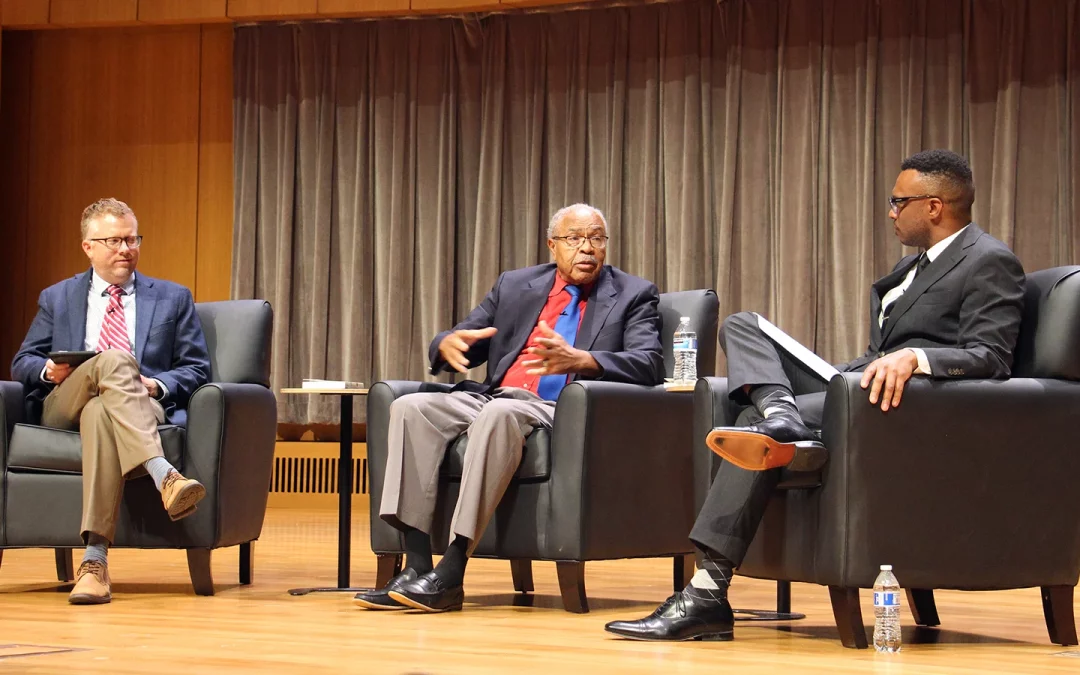
WHEATON, Ill. (RNS) — The Rev. Wheeler Parker Jr. still remembers clearly the moment as a teenager he thought he was going to die.
Parker was 16 years old, visiting family in Mississippi, when he woke in the early morning hours to the sound of voices in the house. Moments later, the door to his bedroom opened and a man pointed a flashlight and a pistol in his face.
He shut his eyes tight, but the shot never came.
The man moved on to the next bedroom and the next before finding and kidnapping his cousin — Emmett Till.
It was the last time he saw his best friend alive, Parker, now in his 80s, told a packed concert hall Tuesday night (Oct. 25) at Wheaton College, the evangelical flagship school in the Chicago suburbs.
What happened next — Till’s brutal murder, his mother’s decision to allow an open casket at the 14-year-old victim’s funeral, so the country could see what had been done to her son — shone a light on racial violence in the United States and became a catalyst for the civil rights movement.
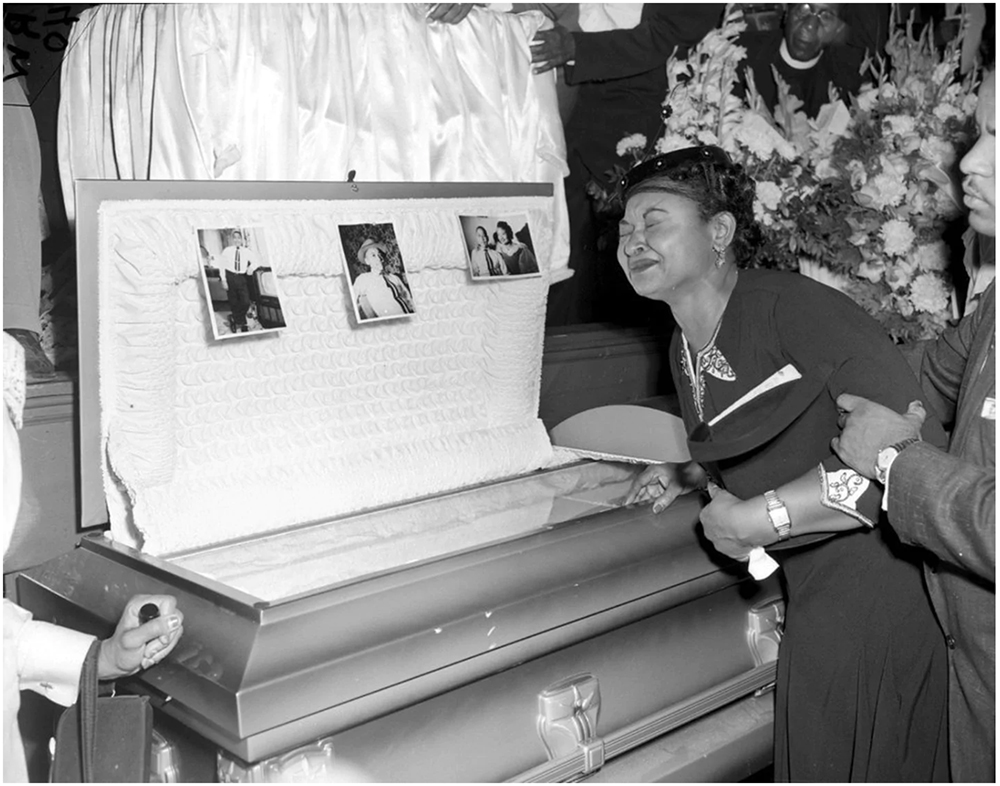
Mamie Till-Mobley weeps at her son’s funeral on Sept. 6, 1955, in Chicago. (Chicago Sun-Times/AP Photo)
“A picture’s worth a thousand words. That picture made a statement. It went throughout the world, all over the world, and it still speaks,” Parker said of the photographs of Till in his casket, taken by David Jackson and first published in Jet magazine.
The story of Till continues to resonate because it “provides us with a lens to understand racial conflict in our own moment,” said Theon Hill, associate professor of communications at Wheaton College and primary organizer and moderator of Tuesday’s event, “Remembering Emmett Till: A Conversation on Race, Nation and Faith.”
“When we see George Floyd killed right in front of us due to the officer’s knee,” said Hill, “when we see Breonna Taylor’s death, when we see Ahmaud Arbery, we’re trying to make sense of what’s happening, and Till’s death, as tragic as it will always be, provides us with a grammar to understand this is what’s happening and this is how you might respond in your moment.”
The enduring relevance of Till’s death is apparent in the Emmett Till Antilynching Act, making lynching a federal hate crime and signed in March by President Joe Biden, nearly 70 years after Till’s murder.
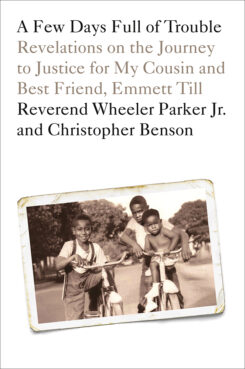
“A Few Days Full of Trouble: Revelations on the Journey to Justice for My Cousin and Best Friend, Emmett Till” by the Rev. Wheeler Parker Jr. and Christopher Benson. Courtesy image
It’s also borne out in the critical acclaim for a new film, “Till,” centering on Till’s mother, Mamie Till-Mobley, and her fight for justice for her son, which appears in theaters nationwide this week. In January, Parker will publish his recollections of his cousin, “A Few Days Full of Trouble: Revelations on the Journey to Justice for My Cousin and Best Friend, Emmett Till.”
It was 30 years before anybody asked Parker his account of what had happened over the handful of days in 1955 he and his cousin, who lived in Chicago, spent in Mississippi visiting family, according to Parker, the last surviving witness to Till’s abduction.
In Parker’s account, Till is a jokester, the boy next door he accompanied fishing, picnicking and on other trips. When his cousin found out he was planning to take the train down South to visit his grandfather, he insisted on going too.
“If you didn’t live in Mississippi at that time or experience what it was like, you have no idea what it was like,” Parker said.
He had lived in the South until he was 7 and knew “what you had to do to stay alive and what could happen to you,” he said.
Till didn’t.
When the younger boy whistled in the presence of a white woman outside a store, Parker said, the cousins left in a hurry. He worried what could happen in a place and time when a Black man couldn’t so much as look at a white woman, he said.
But days passed, and they’d nearly forgotten about the incident. Then came the moment Parker heard voices in his grandfather’s home at about 2:30 a.m. on a Sunday morning, asking about the boys from Chicago.
“Sunday morning should be the safest place on earth for a young man in his house — on Sunday morning, waiting to go to church,” he said.
Shaking and sure he was about to die, he prayed, “God, if you just let me live, I’m going to get my life together.”
That Monday, he returned to Chicago alone, his life changed “completely,” said Parker, now pastor and district superintendent of the Argo Temple Church of God in Christ in Summit, Illinois.
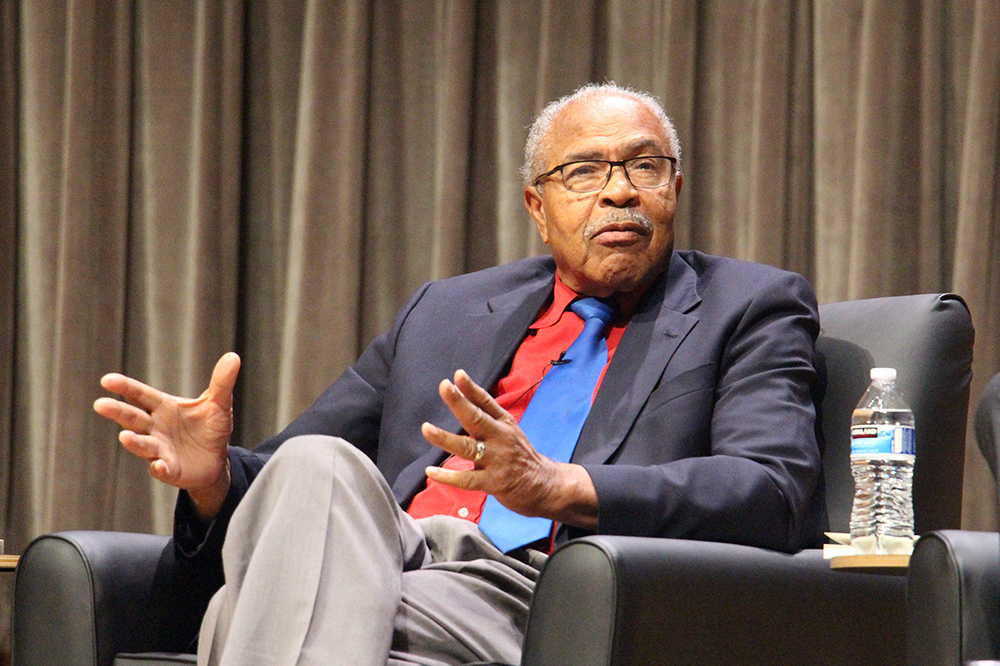
The Rev. Wheeler Parker Jr. speaks during the “Remembering Emmett Till: A Conversation on Race, Nation and Faith” event at Wheaton College, Oct. 25, 2022, in Wheaton, Illinois. RNS photo by Emily McFarlan Miller
What happened to Till changed the country, too.
Dave Tell, author of the 2019 book “Remembering Emmett Till,” told the audience Tuesday night that he had become invested in civil rights because of Till’s story.
“The Till story prompted a new generation to stand up for justice, and I think the good news of the night is that the Till story — Rev. Parker’s story — is still motivating a new generation,” Tell said.
It’s a story, he said, the U.S. needs to hear today more than ever. Considering the stories of Floyd and others against the backdrop of Till’s murder, it’s hard to minimize their killings as “a problem of a bad apple or bad cop,” he said.
And the church has a role to play in sharing that story, both Tell and Parker agreed.
The biblical Book of Genesis tells the story of Abel, murdered by his brother Cain, Tell pointed out. In the story, God says Abel’s blood cries out to him from the ground, where Cain has tried to bury what he did.
If God demands that voices that have been buried be brought to light as part of the work of justice and healing, shouldn’t the church? Tell asked.
“We’ve got to keep the legacy going — got to keep the story going — and not with animosity,” Parker added.
“Just tell the story. It’s history. It’s real. Tell what happened,” he said.
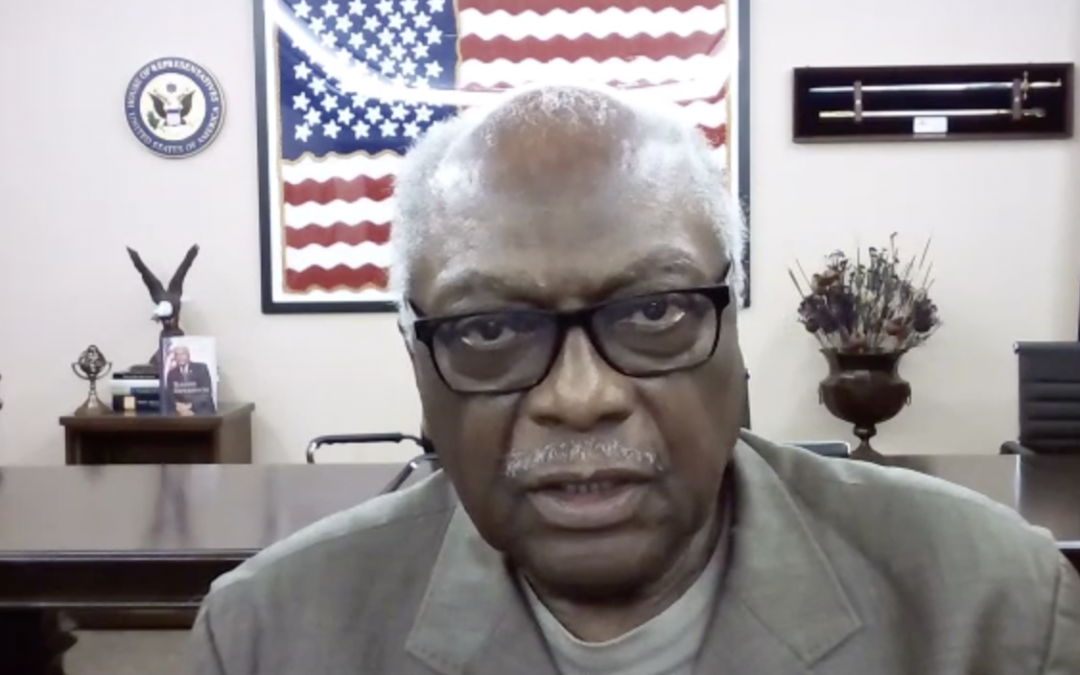
Jim Clyburn has led a remarkable life that has been marked by the pursuit of a more just society. As the child of a minister and a Christian himself, his faith has been a driving force in his public work for justice. He was an early members of SNCC (Student Non-violent Coordinating Committee) working alongside Rev. Dr. Martin Luther King Jr. and Jon Lewis who became his fellow Congressman. He now serves as a Congressman in South Carolina and one of the senior ranking members of the United States House of Representatives. President Joe Biden credits him directly with helping him win the presidency. UrbanFaith sat down with Congressman Jim Clyburn to discuss his faith, his legacy, HBCUs and his work to strengthen democracy and justice in the United States. The full audio interview is above!